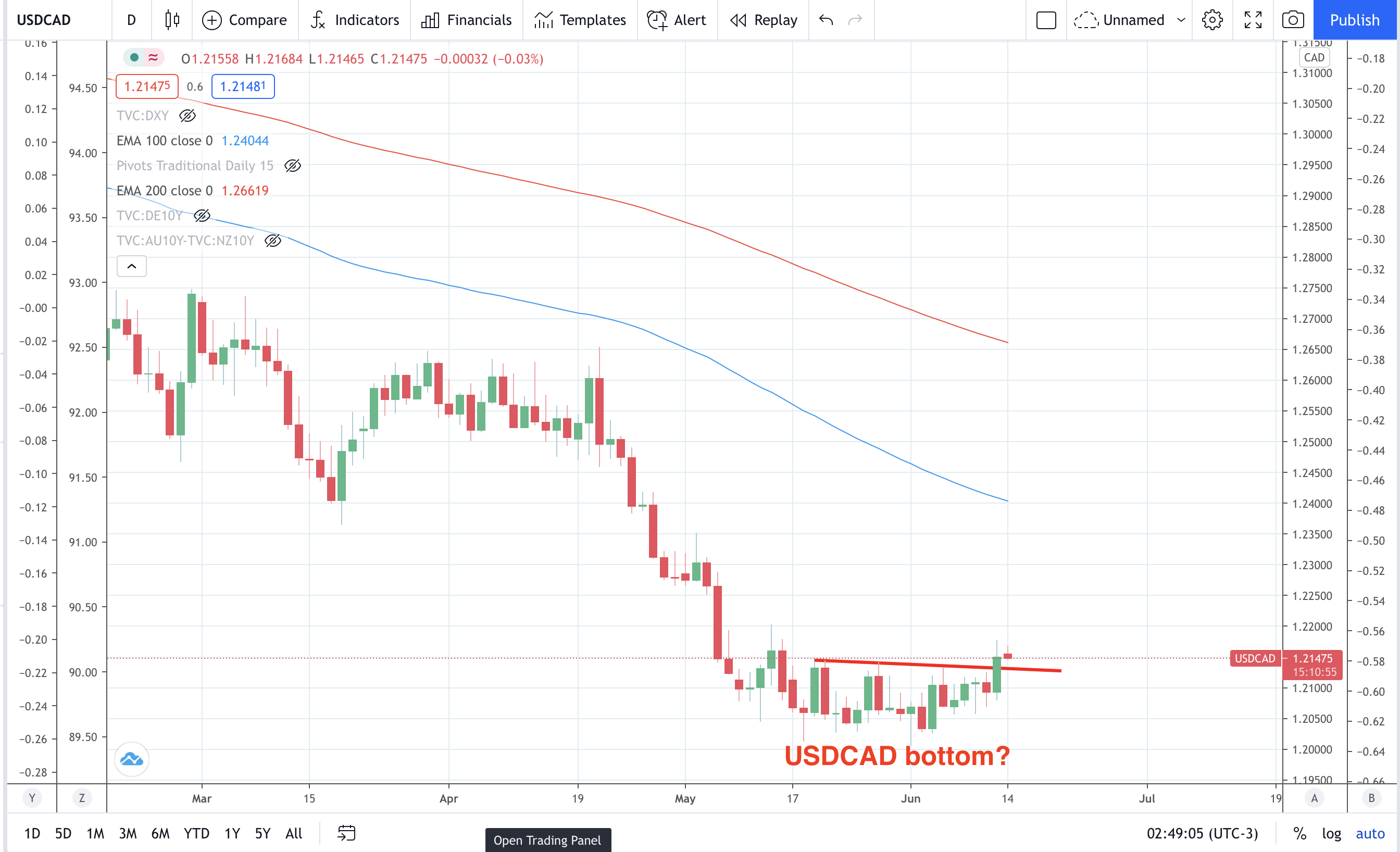The bottom line is that no change is expected tonight in terms of interest rates or bond tapering. However, the interesting part of tonight will be on the economic and inflation forecasts along with the interest rate projections. Here is what a survey of 51 economists expects who were surveyed between June 04-June 10.
Bloomberg economists
- Greater than half of the economists surveyed expect the Fed’s ‘dot plot’ to show an earlier lift-off for rates in 2023.
-
2 out of 5 (40%) expect the Fed to take its first step in tapering monthly bond purchases in August at the Jackson Hole Symposium (August 26-28).
-
One third expect a tapering announcement in September and another third say December.
Labour targets?
The Economists surveyed expect the Fed to be generally upbeat about the robust economic rebound this year. However, bond tapering is expected when unemployment is around 5% and inflation is at 3% as measured by the personal consumption expenditure price index. The April core PCE deflator reading came in at 3.1% y/y, the highest since 1992, but unemployment is still too high. There have been two main reasons that lab our supply is weak.
-
Lack of child care issues and home-schooling which means some parents had to stay at home.
-
Extended unemployment benefits mean the urgency to return to work has been reduced. These benefits are set to continue until September.
Risk of overheating
Higher inflation numbers have shifted the risks to the economic outlook with 65% of those surveyed seeing a risk of the US economy overheating due to an accelerating US vaccination program and fiscal stimulus set to rise with Joe Biden’s infrastructure and jobs plan.
The takeaway
The USD is trying to bottom and the Fed should signal a slightly better picture. The obvious USD buy trade would be if bond tapering is announced or a timescale hinted at. A shift in the dot plot will also likely help lift the USD too. The risk looks asymmetric for USD strength and the USDCAD pair looks due for some retracement.
Our products and commentary provides general advice that do not take into account your personal objectives, financial situation or needs. The content of this website must not be construed as personal advice.
Recommended Content
Editors’ Picks
AUD/USD holds hot Australian CPI-led gains above 0.6500

AUD/USD consolidates hot Australian CPI data-led strong gains above 0.6500 in early Europe on Wednesday. The Australian CPI rose 1% in QoQ in Q1 against the 0.8% forecast, providing extra legs to the Australian Dollar upside.
USD/JPY sticks to 34-year high near 154.90 as intervention risks loom

USD/JPY is sitting at a multi-decade high of 154.88 reached on Tuesday. Traders refrain from placing fresh bets on the pair as Japan's FX intervention risks loom. Broad US Dollar weakness also caps the upside in the major. US Durable Goods data are next on tap.
Gold price struggles to lure buyers amid positive risk tone, reduced Fed rate cut bets

Gold price lacks follow-through buying and is influenced by a combination of diverging forces. Easing geopolitical tensions continue to undermine demand for the safe-haven precious metal. Tuesday’s dismal US PMIs weigh on the USD and lend support ahead of the key US macro data.
Crypto community reacts as BRICS considers launching stablecoin for international trade settlement

BRICS is intensifying efforts to reduce its reliance on the US dollar after plans for its stablecoin effort surfaced online on Tuesday. Most people expect the stablecoin to be backed by gold, considering BRICS nations have been accumulating large holdings of the commodity.
US versus the Eurozone: Inflation divergence causes monetary desynchronization

Historically there is a very close correlation between changes in US Treasury yields and German Bund yields. This is relevant at the current juncture, considering that the recent hawkish twist in the tone of the Fed might continue to push US long-term interest rates higher and put upward pressure on bond yields in the Eurozone.
